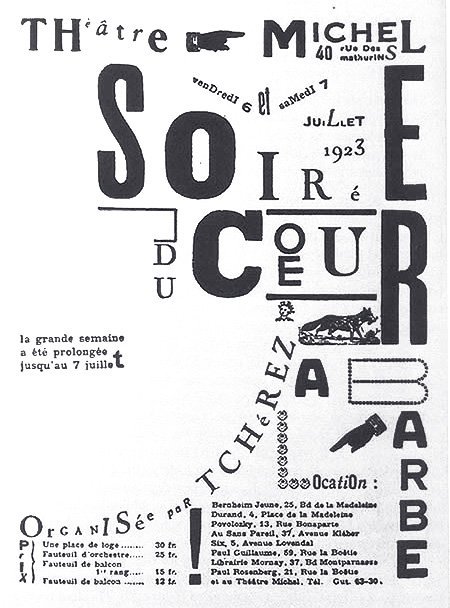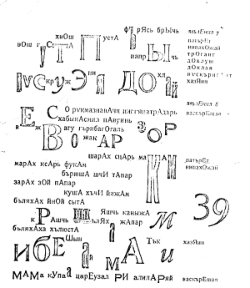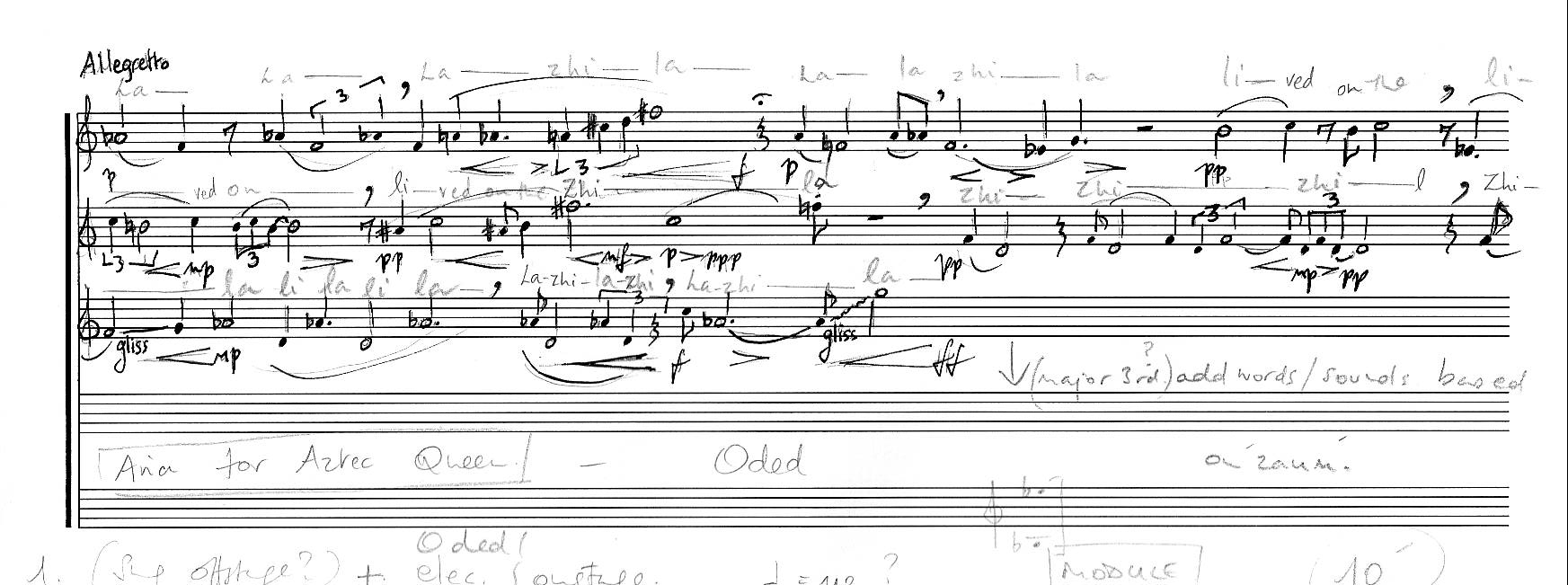It was quite hard to find a lot of information about Zdanevich, as he wasn't one of the larger designers or artists of the time..
I mainly found my content from the internet..
Ilia Mikhailovich Zdanevich (Russian: Илья́ Миха́йлович Здане́вич) (April 21, 1894 – December 25, 1975), known as Iliazd, was a Georgian and French writer and artist, and an active participant in such avant-garde movements as Russian Futurism and Dada.
He was born in Tbilisi to a Polish father, Michał Zdaniewicz, who taught French in a gymnasium and a Georgian mother, Valentina Gamkrelidze, who was a pianist and student ofTchaikovsky. (His older brother Kiril also became a well-known artist.) He studied in the Faculty of Law of Saint Petersburg State University. In 1912 he and his brother, along with their friend Mikhail Le-Dantyu, became enthusiastic about the Tbilisi painter Niko Pirosmanashvili; Ilya's article about him, "Khudozhnik-samorodok" ("A natural-born artist"), his first publication, appeared in the February 13, 1913, issue of Zakavkazskaia Rech'. Later in 1913 he published a monograph Natalia Goncharova, Mikhail Larionov under the pseudonym Eli Eganbyuri (Russian: Эли Эганбюри). In June 1914 the journal Vostok published his article "Niko Pirosmanashvili," in which he mythologized the biography of the older artist, linking him with the Silver Age and the Russian avant-garde. He became involved with the new Futurist movement, participating in their discussions and writing about them andMarinetti in the Russian press, and was drawn to other avant-garde movements as well, such as Zaum and dadaism.
During World War I Zdanevich returned to the Caucasus as a newspaper correspondent, and from 1917 to 1919 he lived in Tbilisi, where he published several collections of poetry in the zaum style (Yanko Krul Albansky, Ostraf Paskhi, and Zga Yakaby). In 1918, he joined Aleksei Kruchenykh and others in the Futurist group "41°." Zdanevich in 1919 adopted the pseudonym Iliazd. He left Tiflis for Batumi, and in October 1920 left the country to investigate the new artistic currents of France. After a year spent in Constantinople acquiring a French visa, he arrived in Paris in October 1921, where together with other artists he organized the group Cherez ("Across"), whose aim was to bring Russian émigrés together with representatives of French culture. In 1923 he began his novel Parizhachi, about four couples who agree to dine together in the Bois de Boulogne; in the course of two and a half hours (each chapter has an exact time for a title, from 11.51 to 14.09) they all manage to betray each other, and the novel itself breaks all manner of orthographic, punctuational, and compositional rules. Zdanevich continued working on this "hyperformalist" novel (which he described as an opis', or "inventory") until 1926, but it was not published until 1994. His second novel, Voskhishchenie ("Rapture"), was published in a small edition in 1930 and was ignored at the time. Set in a mythical Georgia among mountaineers, on the surface a crime novel, it is actually a fictionalized history of the Russian avant-garde, full of allusions to world literature; it could be said to anticipate magic realism. The language of the novel is innovative and poetic, and the Slavist Milivoje Jovanović called it "undoubtedly the summit toward which the Russian avant-garde was striving."
Zdanevich's 1923 poster for his and Tristan Tzara's Soirée du coeur à barbe [Evening of the bearded heart] is a widely known example of avant-garde typography and graphic design. During the last forty years of his life in Paris, Zdanevich was active in a variety of areas. He did analyses of church elevations, created fabrics for Chanel, and above all consecrated himself to the creation of artist's books with the collaboration of Picasso, Max Ernst, Miro, and others. His innovative typographic and design work has been exhibited at the New York Public Library, MOMA, in Montreal, in Tbilisi in 1989 in a joint exhibition with his brother Kiril, and in many other venues. Catalogs for many of these exhibitions exist and contain considerably more detailed information about his life and works. Ilia Zdanevich died on Christmas Day 1975 in Paris.
A lot of Zdanevich's work came from Russian poems called zaum.
I noticed that a lot of Zdanevich's work plays with the use of typography and language - how language is reflected and read through the use of type and sounds.
I really love the colour scheme used within this design by Zdanevich as it really does reflect the Russian Soviet style. The old feel to the stock gives it authenticity.
The general layout of Zdanevich's design style was interesting and contributed towards my design aesthetic for the book. It helped with playing around with type and how to use it in different ways for the title pages.
Zaum Poetry
Zaum (Russian: зáумь) are the linguistic experiments in sound symbolism and language creation of Russian Futurist poets such as Velimir Khlebnikovand Aleksei Kruchenykh.
Coined by Kruchenykh in 1913, the word zaum is made up of the Russian prefix за "beyond, behind" and noun ум "the mind, nous" and has been translated as "transreason", "transration" or "beyonsense" (Paul Schmidt). According to scholar Gerald Janecek, zaum can be defined as experimental poetic language characterized by indeterminacy in meaning.
Kruchenykh, in “Declaration of the Word as Such (1913),” declares zaum “a language which does not have any definite meaning, a transrational language” that “allows for fuller expression” whereas, he maintains, the common language of everyday speech “binds.” He further maintained, in “Declaration of Transrational Language (1921),” that zaum “can provide a universal poetic language, born organically, and not artificially, likeEsperanto."
Examples of zaum include Kruchenykh's poem "dyr bul schyl," Kruchenykh's libretto for the Futurist opera Victory over the Sun with music by Mikhail Matyushin and stage design by Kazimir Malevich, and Khlebnikov's so-called "language of the birds", "language of the gods" and "language of the stars". The poetic output is perhaps comparable to that of the contemporary Dadaism but the linguistic theory or metaphysics behind zaum was entirely devoid of the gentle self-irony of that movement and in all seriousness intended to recover the sound symbolism of a lost aboriginal tongue. Exhibiting traits of a Slavic national mysticism, Kruchenykh aimed at recovering the primeval Slavic mother-tongue in particular.
In modern times, contemporary avant-garde poet Sergei Biriukov has founded an association of poets called the "Academy of Zaum" in Tambov. Other practitioners of zaum poetry include Serge Segay and Rea Nikonova.
The use of Zaum peaked from 1916 to 1920 during World War I. At this time, Zaumism took root as a movement primarily involved in visual arts, literature, poetry, art manifestoes, art theory, theatre, and graphic design, and concentrated its anti war politic through a rejection of the prevailing standards in art through anti-art cultural works. Zaum activities included public gatherings, demonstrations, and publications. The movement influenced later styles, Avant-garde and downtown music movements, and groups including surrealism, nouveau réalisme, Pop Art and Fluxus.
A [building] crane [or faucet] of gray velvet in my heart was placed
And they squeeze tenderness out as from an intestine
into a scroll of banknotes rustling like a woman
A-choo!
Hey, better again to be a HERD whistled-at
(like a buffalo looking at my automobile)
or a lout again tossed out to fall
behind the carriage
So I should be quiet....
not squeeze out any honey....
I don't want to! ...
I'd rather
me- lan- cho- lically
pick the nose
of
a cow with a spoon
A - a - choo! -
I thought that Russian Zaum poetry was quite weird, and very futuristic for the period.
- Leave your comment • Category: brief 1 (505), OUGD505
- Share on Twitter, Facebook, Delicious, Digg, Reddit









